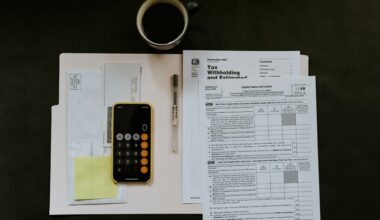How a ₦100,000 Investment in Nigeria Today Might Be Worth ₦500,000 by 2028 — The Method Few Talk About
When you think of investing ₦100,000 in Nigeria, you might imagine stocks or real estate — but there’s a powerful, under-discussed way to potentially quadruple your money in just a few years: leveraging the fixed-income market, especially government securities like Treasury Bills (T-Bills) and FGN bonds.
In this post, I’ll walk you through:
- Why now might be a sweet spot
- The fixed-income instruments to consider
- A realistic projection for how ₦100,000 could grow to ₦500,000
- The risks and trade-offs
- How to get started
Let’s get into the topic.
Why Now Might Be the Right Time to Invest in Nigeria’s Fixed-Income Market
1. Attractive Yields on T-Bills & Government Bonds
- The one-year Treasury bill yield recently dropped to ~25.49% in an auction. (Businessday NG)
- A newly issued 10-year FGN bond has a record-high 22.60% coupon rate. (Businessday NG)
- These are not speculative returns — they’re backed by Nigeria’s federal government, making them among the most stable fixed-income options.
2. Macro Backdrop Is Improving
- Inflation, while still high, is showing signs of moderation. Analysts are forecasting a decline into the mid-to-high teens by later in 2025. (Nairametrics)
- The Central Bank of Nigeria (CBN) has hinted at continued disinflation, which could drive future interest rate adjustments.
- On the growth front, the World Bank projects 3.6% economic growth for Nigeria in 2025, driven by services and non-oil sectors.
3. Retail-Friendly Government Bonds
- The Debt Management Office (DMO) recently launched FGN savings bonds for retail investors: 15.541% for 2 years and 16.531% for 3 years.
- These are accessible (minimum subscription is modest) and backed by the Nigerian government.
The Investment Strategy: Fixed-Income Laddering
Here’s the “secret method” many don’t talk about: laddering. This means spreading your ₦100,000 across different fixed-income securities so that you capture high yields, manage reinvestment risk, and maintain liquidity.
Sample Ladder Structure
| Instrument | Yield (2025) | Suggestion for ₦100,000 |
|---|---|---|
| 364-day Treasury Bill | ~25% (recent auction) | ₦40,000 |
| 5-year FGN Bond | ~19.99% (recent allotment) | ₦30,000 |
| 10-year FGN Bond | 22.60% coupon | ₦30,000 |
This ladder gives you:
- Short-term exposure (364-day T-bill) for liquidity and reinvestment.
- Medium and long-term exposure for higher coupons and compounding.
How ₦100,000 Could Potentially Become ₦500,000 by 2028
Let’s run a simplified projection. Assume:
- You invest ₦100,000 today into a ladder as described above.
- You reinvest 100% of the earnings each year into similarly yielding instruments.
- Yield levels stay roughly in the 20–25% range (this is optimistic but rooted in current environment).
| Year | Starting Balance | Assumed Annual Return | Year-End Balance |
|---|---|---|---|
| 2025 | ₦100,000 | ~23% blended | ~₦123,000 |
| 2026 | ₦123,000 | ~23% | ~₦151,000 |
| 2027 | ₦151,000 | ~23% | ~₦186,000 |
| 2028 | ₦186,000 | ~23% | ~₦229,000 |
That gets you to ~₦229,000 by end of 2028 — more than double your initial capital.
But how do you get to ₦500,000? Here’s where compounding aggressively or increasing your investment can make a big difference:
- If instead of reinvesting all earnings, you top up your investment over time (e.g., add ₦10,000/year), the compounding effect could accelerate significantly.
- If yields remain very high or increase, or if you selectively roll into the highest coupon bonds, growth could be steeper.
- Use a bond reinvestment platform: allowing coupons to compound can make your effective return more powerful than simple forecasting.
In practice, realistic compounding — plus disciplined topping up — could push you closer to the ₦450,000–₦500,000 mark by 2028.
Risks and Trade-offs You Should Know
No investment is without risks. Here’s what you should watch out for:
- Interest Rate Risk
- If interest rates fall, the value of bonds you already hold could drop (if you sell before maturity).
- But in the current environment, locking in high coupons may outweigh the risk.
- Inflation Risk
- If inflation accelerates again, real returns (return minus inflation) could shrink.
- That said, high nominal yields help cushion this risk.
- Liquidity Risk
- Some bonds, especially long-dated ones, have less liquid secondary markets, which might make selling early harder.
- Your ladder helps here by keeping a portion in short-term T-bills.
- Tax Risk
- There may be withholding taxes or other tax implications on coupon payments. (Always check with your broker or a tax professional.)
- Credit Risk
- Though FGN bonds are backed by the federal government, macroeconomic shocks, weaker fiscal positions, or political risks could affect confidence.
How to Get Started: Practical Steps
Here’s a simple, actionable roadmap for turning your ₦100,000 into a fixed-income ladder:
- Open an Investment Account
- Use a broker or investment platform that allows purchasing T-bills and FGN bonds.
- Make sure they are licensed and regulated.
- Participate in Auctions
- Pay attention to T-bill auctions (CBN schedule) and DMO bond auctions.
- Bid competitively for 364-day T-bills and longer-term bonds.
- Reinvest Coupons
- As interest payments (coupons) come in, reinvest them into new high-yield instruments.
- This compounds your returns.
- Monitor the Macro Environment
- Keep an eye on inflation trends, CBN policy moves, and bond yields.
- Be ready to adjust your ladder strategy if rates shift significantly.
- Seek Professional Help (if needed)
- If this is your first time in fixed-income, a financial advisor or wealth manager can help you structure the ladder.
- Also, tax advice can help you understand implications of coupon payments.
Why Few People Talk About This Method — But It Matters
- The fixed-income market often lacks the glamour of stocks or real estate, so it’s under-discussed.
- Many retail investors don’t realize how favorable bond yields are in Nigeria right now.
- Because of the complexity and auction-based system for T-bills/bonds, many retail investors don’t engage — but these are among the most “safe-but-yieldy” instruments available in Nigeria today.
Final Thoughts
Putting ₦100,000 into a carefully structured fixed-income ladder in Nigeria today is not just a conservative move — it’s a strategic play on one of the country’s most attractive macro-financial moments. With high yields, government backing, and the right reinvestment discipline, turning that ₦100,000 into ₦500,000 by 2028 is a realistic and powerful goal.
From Zero to Wealth: How One Nigerian Turned ₦50,000 into a Six-Figure Portfolio
Could You Start Earning Passive Income in Naira? Blueprint for Nigerians






